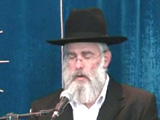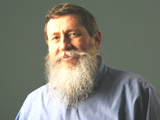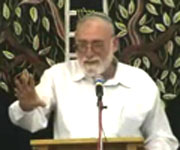Beit Midrash
- Sections
- Chemdat Yamim
- Parashat Hashavua
- Torah Portion and Tanach
- Bereshit
- Noach
Over the coming weeks, we want to deal with the following questions: Who, in Tanach, do we find building towers, what did they have in common, and why does it seem to be so antithetical to the Torah? Also, who in the Jewish people fought the trend?
The motivation of the builders of the Tower of Bavel was to "make for ourselves a name lest we scatter upon the face of the earth" (Bereishit 11:4). "Men of name" and "gibborim" were already mentioned last parasha, in the context of the powerful men who took wives as they pleased. This is certainly a negative social situation, which the Torah frowns upon (see ibid. 6:2,4), and it was part of Hashem’s decision to destroy the world with the flood.
Despite this fact, a few generations after the flood, there were people who started sinning in connection to the tower. Nimrod was described as a gibbor (ibid. 10:8-9). Chazal identified him as the leader of the tower builders (see Rashi ad loc.). He too, then, was a gibbor who wanted to "make a name." We will discuss later why he failed.
The next tower builder in Tanach was the King of Ashur (Assyria) at the time of King Chizkiyahu, who we know to be Sargon II, who exiled the Ten Tribes. Yeshayahu actually refers to him as the King of Bavel, who said: "I will raise my throne and will sit on the mountain … I will go up to the clouds and will be like a deity" (Yeshayahu 14:12-14). We see from here that Sargon II built a tower that reached the clouds and compared himself to a god.
The third tower builder was Nevuchadnetzar, who destroyed the First Temple and exiled the Judeans to Bavel. He built a massive idol 60 amot high, gathered a huge crowd of nobleman under the dominion of his empire, had many musicians play music, and then forced everyone to bow down to the idol (Daniel 3:1-5). Chazal understood that he imitated Sargon II in sitting on top of the idol/tower at that time (see Pesachim 94a). As opposed to Nimrod, Nevuchadnetzar seemed to have learned a lesson and did not try to force everyone to speak one language. Rather he understood that music could serve as a single international language of sorts, which is why he ordered in the orchestras of different rulers.
Next week we will see who ruined the plans of these mighty leaders, and what the Jewish response is to tower builders. We pray that we will be able to unite the Jewish Nation, in Israel and the Diaspora, and to strengthen the State of Israel, so that it will be a tower of light, spreading the light of kindness and justice to peoples all over the world.

You Always Need to Pray
Rabbi Yossef Carmel

Parashat Hashavua: Divinely Ordained Sibling Deceit
Rabbi Yossef Carmel | Cheshvan 5786

Parashat Hashavua: The Symbolism of Mashiv Haruach U’morid Hageshem
Rabbi Yossef Carmel | Tishrei 5786

























